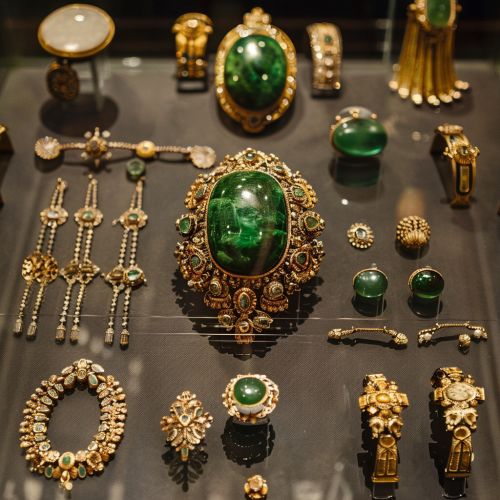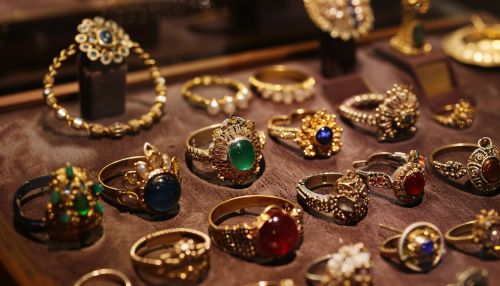Jewelry design
Overview
Jewelry design is the art or profession of designing and creating jewelry. This is one of civilization's earliest forms of decoration, dating back at least seven thousand years to the oldest known human societies in Mesopotamia and Egypt. The art has taken many forms throughout the centuries, from the simple beadwork of ancient times to the sophisticated metalworking and gem cutting known in the modern day.
History


The history of jewelry design is a rich tapestry that spans cultures, continents, and millennia. From the earliest known examples of jewelry found in the ancient civilizations of Mesopotamia and Egypt, to the intricate and ornamental designs of the Renaissance, and up to the modern and contemporary styles of today, jewelry design has been a constant presence in human history.
Ancient Times
The earliest known jewelry was actually created not by humans, but by Neanderthals living in Europe. Specifically, perforated beads made from small sea shells have been found dating to 115,000 years ago in the Cueva de los Aviones, a cave along the southeast coast of Spain. These shells were probably strung into a necklace or bracelet, with each shell individually chosen for its aesthetic appeal.
Middle Ages
During the Middle Ages, jewelry design underwent significant changes. The fall of the Roman Empire led to a decline in gold mining, which in turn led to a scarcity of gold for jewelry making. As a result, jewelry designers had to become more creative, using less valuable materials and focusing more on design and craftsmanship.
Renaissance
The Renaissance period was a time of great change and innovation in many fields, including jewelry design. The increased availability of precious gems and metals, along with the development of new cutting and setting techniques, led to a boom in the production of high-quality, intricate jewelry.
Modern and Contemporary
In the modern and contemporary eras, jewelry design has become increasingly diverse, with designers drawing inspiration from a wide range of sources. The advent of new materials, such as plastics and synthetic gems, has also opened up new possibilities for design.
Design Process
The process of jewelry design involves several stages, from initial concept and design, through to final production. Each stage requires different skills and knowledge, from understanding gemstones and metals, to being able to work with different tools and techniques.
Concept and Design
The first stage in the design process is the development of an initial concept. This can be inspired by anything, from a piece of visual art, to a particular gemstone or color, or even a mood or emotion. Once the initial concept is developed, the designer will then refine this into a more detailed and practical design.
Materials Selection
Choosing the right materials is a crucial part of the design process. The choice of materials can greatly affect the look, feel, and cost of the final piece. Materials can include precious metals like gold or silver, gemstones, beads, and even more unusual materials like leather or fabric.
Production
The final stage in the design process is production. This involves turning the designer's vision into a physical piece of jewelry. Depending on the complexity of the design, this can involve a variety of techniques, from simple hand assembly to more complex methods like casting or stone setting.
Styles and Techniques
There are many different styles and techniques used in jewelry design, each with its own unique aesthetic and method of construction.
Traditional
Traditional jewelry design often involves the use of precious metals and gemstones, and techniques such as forging, casting, and stone setting. These designs often feature intricate details and high levels of craftsmanship.
Contemporary
Contemporary jewelry design often pushes the boundaries of traditional design, using unconventional materials and techniques. This can include the use of plastics, textiles, and even found objects.
Art Jewelry
Art jewelry is a term used to describe pieces that are designed as expressive works of art, rather than for their value as adornment. These pieces often use unconventional materials and techniques, and can be highly conceptual and experimental in nature.
Education and Career
Becoming a jewelry designer requires a combination of artistic talent, technical knowledge, and business skills. Many designers have a degree in a related field, such as fine arts or fashion design, but this is not always necessary.
